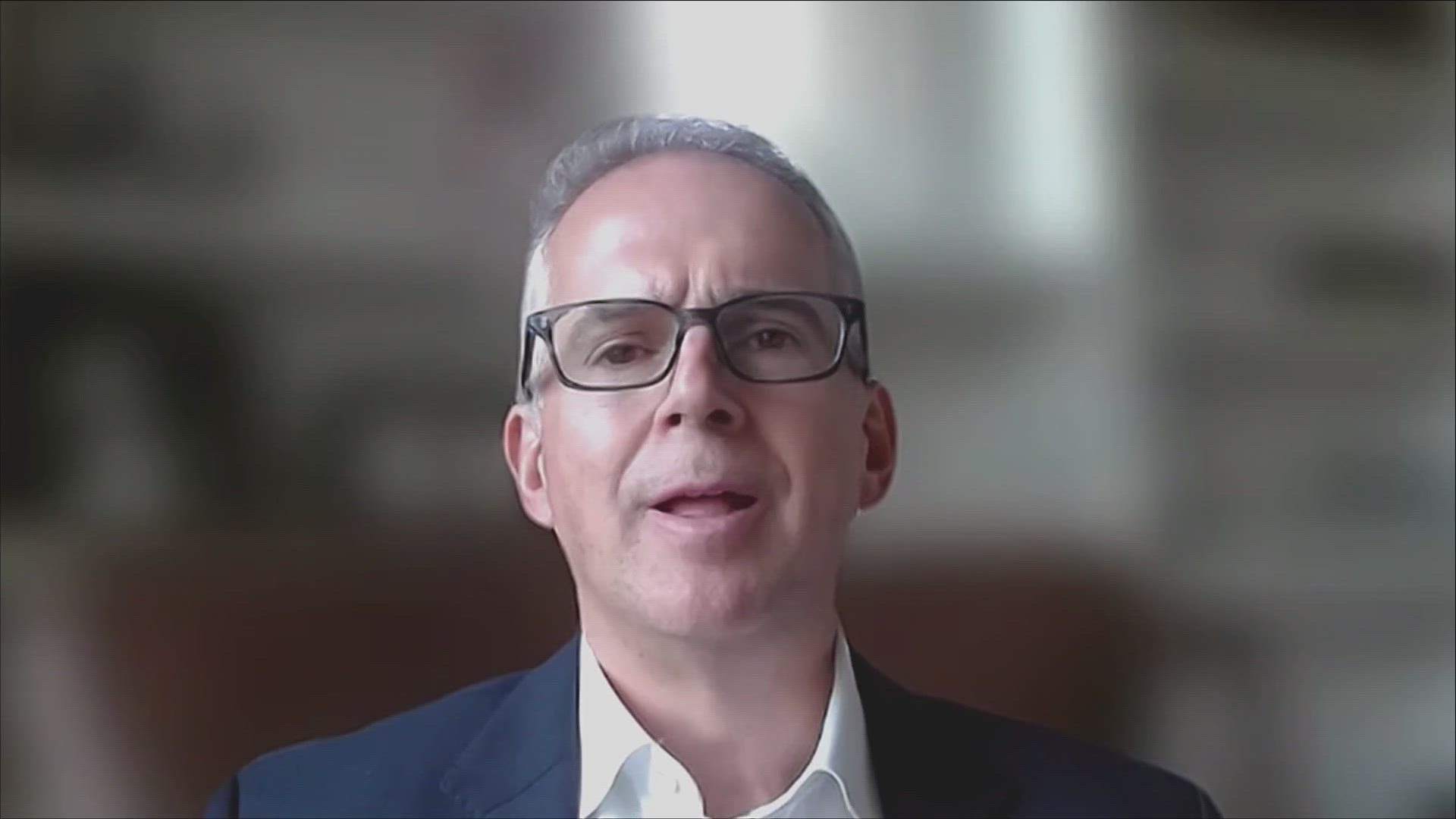AUSTIN, Texas — The Electric Reliability Council of Texas (ERCOT) manages the power grid for the majority of the state. It’s the agency's job to keep power flowing.
ERCOT leaders have issued eight public conservation appeals since Aug. 17. Prior to that, ERCOT issued other watches due to temperatures expected to be greater than 103 degrees.
In Thursday’s ERCOT Board of Directors meeting, ERCOT President and CEO Pablo Vegas said the power reserves dipped near emergency operational level Aug. 17.
“What happened on Aug. 17 is we had a very high demand day, just like we did through the rest of the summer. But what was different that day is that we had very low wind performance that day. So we ended up calling a conservation call for that day. And during the course of that ramp period where the solar is ramping down and we're waiting for the wind to come up, and we had a low wind expectation for that day, we leveraged all of the available ancillary services that our control room has in order to manage that ramp, including using one of the products that we generally reserve to the very end of right before you get into an emergency operations situation, which is our emergency reserve services (ERS), which is where we asked at the last stage those who we have paid to have load available to take offline, we called on them to take that load offline. And then at the same time we called out to our transmission operators and we asked them to reduce voltage on the distribution system for a period of time to help manage the demand," Vegas said in the meeting. "At that point in time, on that day we came within about 600 megawatts or so of what would be the requirement to enter into emergency operations. That's against the peak demand of almost 85,000 megawatts that day. So it's a very tight margin that day."
Energy Emergency Alerts (EEA) begin when power reserves fall below 2,300 MW and are not expected to recover within 30 minutes.
Vegas said the calls for conservation worked.
“When we do a voluntary conservation ask, we do that because we think that there's a possibility of having low reserves later that day. And we want to try to avoid getting into an emergency situation with emergency operations. When we elevate that to an appeal, we have a much higher belief that we're going to be in a low reserve situation. And so we're again, though we're not in emergency operations at that time. We're trying to avoid doing so,” Vegas said.
Vegas said the public’s response kept the grid safe.
“Over the last ten [or] 11 days, we've asked Texans quite a bit to conserve energy during broad periods in the afternoon and early evenings. So the impact of those calls and the impact of the response from Texans has been nothing short of tremendous. We have seen each of the days that we have made those calls have a material and meaningful impact on the energy demand during that day and it has contributed in each of those days to us being able to get through a tight period of operations without having to go into emergency operations,” Vegas said.
The peak power demand record rose 7% in the ERCOT region this year. According to United States Energy Information Administration (EIA) records, national sales of electricity for all sectors rose 2.7% from 2021 to 2022.
Projections show that it may not slow down.
“Our projections of residential consumption of purchased electricity increase between about 14% and 22% from 2022 to 2050,” shows the EIA outlook released Mar. 16, 2023.
“Texas is unique in a lot of ways because we change faster here than most grids in the United States do,” Vegas said.
Vegas said large industrial customers are joining the power grid faster than ever, and transmission companies can’t match the speed.
“Historically, we could plan the transmission needs of the system in a timetable that aligned with the development of large loads. Today we can't. Today loads are coming online in 12, 18, 24 months, much faster than the transmission grid can be adapted in order to be able to serve them,” Vegas said.
ERCOT is working with the Department of Energy and Environmental Protection Agency to find a balance between meeting environmental goals while mitigating energy risks.
Some in attendance at the board meeting expressed concerns of power plant closures related to enhanced EPA standards.
Vegas said they are working with Texas A&M University to study energy efficiency, demand response and residential solar.
“What we're doing with (Texas) A&M is we're wanting to understand the potential of those areas, and that way we can understand the magnitude of what it could represent, what potentially the cost of it would be if we were to advance and incentivize the development of that. And then we can use that to compare against other options to help drive reliability of supply side options, transmission options,” said Vegas. “This is not just a story about how do we build more generation. This is a discussion about how do we address reliability needs of the grid. And we have to look at all three components in order to consider that fully.”

